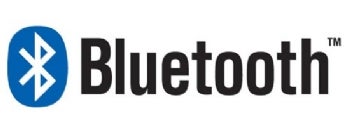Google labs have unveiled another new and exciting features called Similar Images. This is tagged as "Redefine your image search with Visual Similarity". What it does is that it allows you to redefine what you are exactly looking for by clicking on a similar images link below the search result (which is an image).
For example if you are searching for Paris, the initial result would give you images of Paris France, Eiffel Tower, Paris Hilton etc. But if your intention was to look for Eiffel Tower you can click similar images below an images and wow you got rid of unwanted images. The matching that Google does has not much to do with actual image matching, which could be really resource intensive, but on meta tags associated with images. This some times dilutes the filtered results but nonetheless you get one step closer to your intended results.
So its time to get along with http://similar-images.googlelabs.com/
Wednesday, April 22, 2009
Similar Images from Google
Tuesday, April 21, 2009
Faster Bluetooth 3.0 Launches with WiFi Twist

The Bluetooth Special Interest Group today officially launched Bluetooth 3.0 with some big claims for the short-range wireless standard. The biggest improvement for the new standard is speed, which jumps from a top transfer rate of 3 Mbps found in the current Bluetooth standard to 24 Mbps in 3.0, according to the Bluetooth SIG. Faster speeds are accomplished because 3.0 employs the 802.11 radio protocol--basically allowing the Bluetooth protocol to piggyback on a Wi-Fi signal when transferring large amounts of data like videos, music and photos.
However, laboratory tested speeds don't always work out as advertised when used in everyday scenarios. Nevertheless, in an e-mail interview Michael Foley, executive director of the Bluetooth SIG, stands behind the speed claims adding that the average user will experience transfer rates between 22-26 Mbps with 3.0. This is a great advantage for devices that use an ad hoc connection, because it means you can transfer data between two devices at high speed without using a USB cable or logging on to a Wi-Fi network.
Other new and notable Bluetooth features include Unicast Connectionless Data giving 3.0 devices improved responsiveness and noticeably better battery life; and Enhanced Power Control which reduces the incidence of disconnects caused by movement such as placing a phone in pocket or purse.
From its All-Hands Meeting in Tokyo today, the Bluetooth SIG said manufacturers Atheros, Broadcom and CSR are already shipping 3.0 computer chips to device manufacturers and 3.0-enabled gadgets should be on store shelves within the next 9-12 months. There's no word yet on what devices will be the first to benefit from the faster Bluetooth speeds. But Foley says he's seen interest from computer and cellular phone makers, and even Television manufacturers.
While it's pretty much a given that computers and mobile phones will employ the new standard, TV makers are not a part of the typical Bluetooth crowd making it interesting to see if any TV makers adopt Bluetooth into their sets. If they did, it wouldn't be the first time TV makers had flirted with Bluetooth. As recently as last summer, LG Electronics announced its 7000-series of LCD and Plasma televisions would let you use wireless headphones via Bluetooth. Wireless headphones are one of the more common uses for Bluetooth, but with the faster transfer rates television manufacturers may find more interesting uses for 3.0.
With faster speeds, Bluetooth 3.0 promises to help increase adoption among users and manufacturers; however 3.0 also faces competition from an emerging short-range standard: Wireless USB. Using ultrawideband (UWB) technology, Wireless USB claims blazing fast speeds of up to 480Mbps between two devices within ten feet of each other.
Yet there is a possibility that Bluetooth could adopt UWB since the technology's guardian, the WiMedia Alliance, last month transferred the specifications for the UWB radio to the Bluetooth SIG and the Wireless USB Promoter Group. "Should UWB prove viable," Foley said. "It could be considered for a version of Bluetooth technology down the road, but at this point it's too early to tell."
For the moment, Bluetooth has staked its future on the more familiar 802.11 protocol, and you can be sure that PC World will put Foley's speed claims to the test once 3.0 devices become available. source
Wednesday, April 8, 2009
Creating tech marvels out of a $40 Wii Remote
Look at Johnny Lee demonstrating his achievements and ideas with Wii Remote. Building sophisticated educational tools out of cheap parts, Johnny Lee demos his cool Wii Remote hacks, which turn the $40 video game controller into a digital whiteboard, a touchscreen and a head-mounted 3-D viewer.